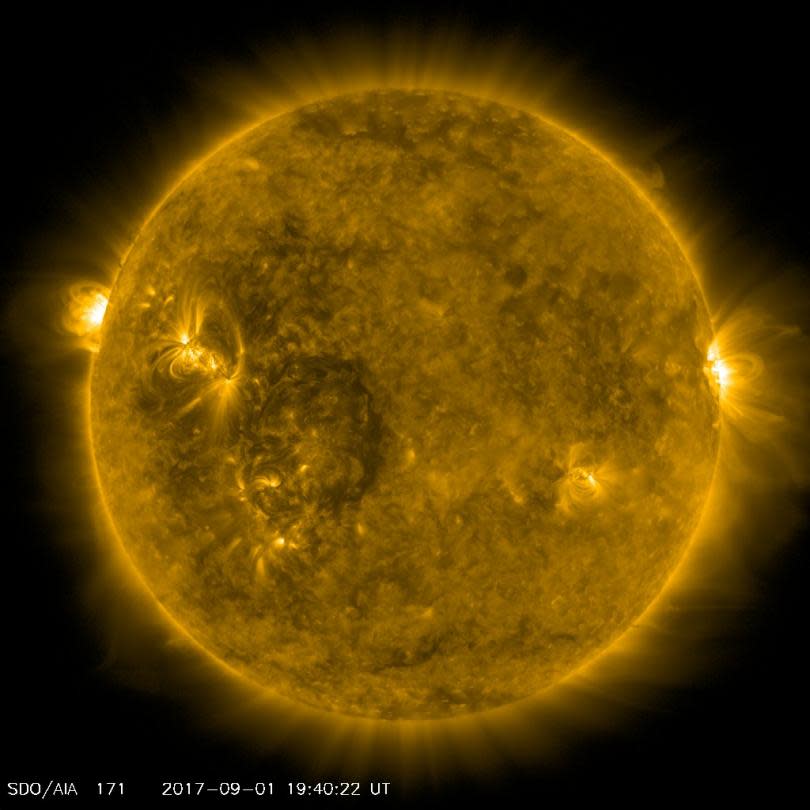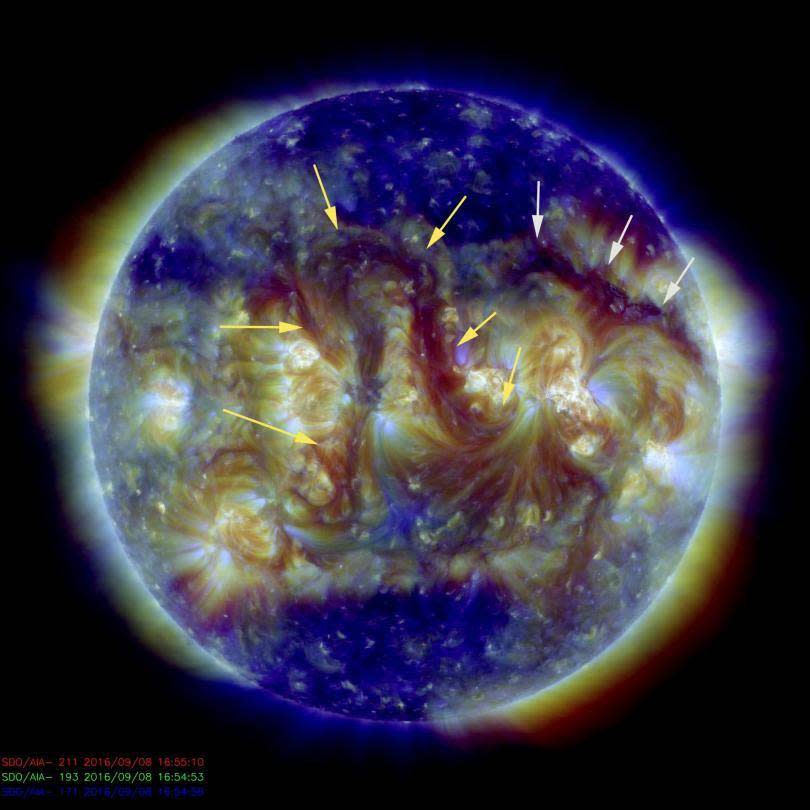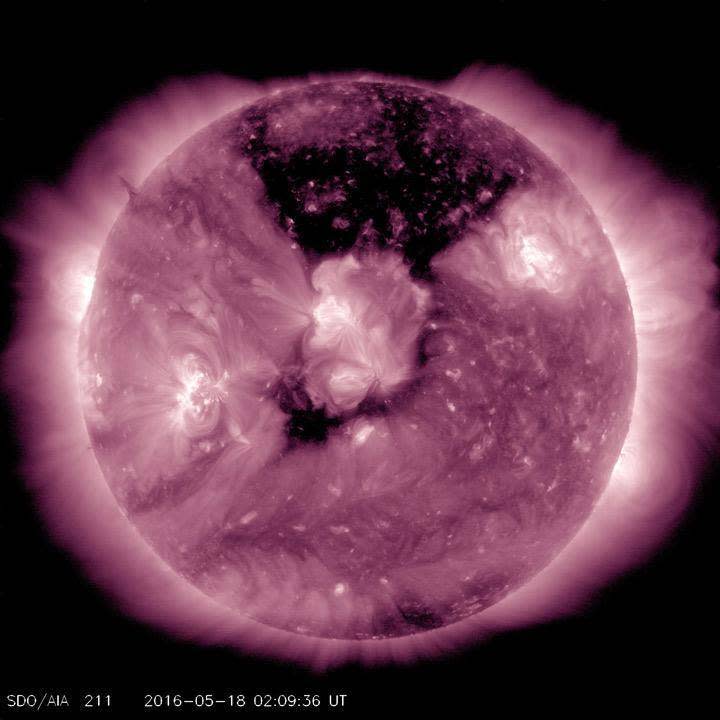These 7 NASA Photos Show How Complex Our Star Really Is
One of the most important objects in space that NASA spends time and resources studying is our very own sun. The giant star provides the light and energy necessary for most processes on Earth and keeps the planets in orbit instead on a collision course with one another.
NASA is constantly assessing data from the sun and even has a telescope trained on the sun all the time. The Solar Dynamics Observatory launched in 2010 with the goal of studying solar variability and weather and what impacts those have on Earth and the space around Earth. Every day NASA posts photos taken by the SDO online so that anyone can go look at what the sun is currently up to. On Friday, the image of the sun was detailed and showed a few flares coming off the surface of the giant star and the surface swirling. It was taken in the 171-angstrom wavelength by the SDO.

This photo of the sun's surface was taken by the SDO telescope on September 1, 2017. Photo: NASA
The SDO isn’t the only telescope NASA uses to study the sun. There is also a mission called the Nuclear Spectroscopic Telescope Array, or NuSTAR, that studies the universe from space in high energy x-rays. While its primary focus is not on the sun, it does take photos of the microflares on the surface of the sun. This photo was created from photos taken by the NuSTAR and SDO as well as another telescope that belongs to Japan called the Hinode.

This photo of the sun is a combination of photos taken from three different telescopes. Photo: NASA
This photo taken by the SDO shows a large sunspot that has come and gone for some time. This was captured during the early days of August and the sunspot caused a coronal mass ejection on the sun.

The sun spot named AR2665 rotated out of view and then returned in early August 2017. Photo: NASA
Another product of the SDO shows the plasma on the sun swirling creating quite an impressive photo. The turbulence was likely caused by magnetic fields on the sun. The plasma above the surface doesn’t ever fully break off it just swirls and loops.

This photo shows plasma twisting above the sun's surface. Photo: NASA
In 2016 the SDO captured this photo of filaments on the sun, indicated by the arrows. Filaments are essentially long strands of plasma that are kept suspected above the surface of the sun by magnetic fields, meaning they’re fairly unstable structures. This photo is actually three photos all taken in high ultra violet wavelengths that were all combined.

This photo highlights the elongated filaments on the surface of the sun that are raised by the magnetic fields. Photo: NASA
NASA uses different wavelengths to spot different features and occurrences on the sun’s surface. This photo was taken in the 131-Angstrom wavelength, one that is especially good for capturing solar flares. It was specifically taken to track a solar flare occurring on the lower left side of the sun that the Mars rover had noticed and tracked and then the SDO captured.

The sun imaged by SDO's 131-Angstrom wavelength channel. Photo: NASA
This photo of the sun, again taken by the SDO, shows a coronal hole, or a hole in the sun’s corona that left a large portion of the sun uncovered by the corona, the hottest part of the sun’s atmosphere. The corona puzzles researchers who are unsure of how the heat and energy transfers to the corona making it hotter than the surface of the sun.

The sun imaged to expose a coronal hole. Photo: NASA
Much is unknown about the sun but while researchers search, there are guaranteed to be more beautiful photos of our sun.
Related Articles


